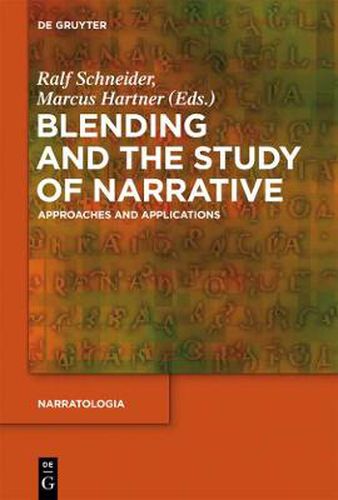Readings Newsletter
Become a Readings Member to make your shopping experience even easier.
Sign in or sign up for free!
You’re not far away from qualifying for FREE standard shipping within Australia
You’ve qualified for FREE standard shipping within Australia
The cart is loading…






The theory of Blending, or Conceptual Integration, proposed by Gilles Fauconnier and Marc Turner, is one of most promising cognitive theories of meaning production. It has been successfully applied to the analysis of poetic discourse and micro-textual elements, such as metaphor. Prose narrative has so far received significantly less attention. The present volume aims to remedy this situation.
Following an introductory discussion of the connections between narrative and the processes of blending, the contributions demonstrate the range of applications of the theory to the study of narrative. They cover issues such as time and space, literary character and perspective, genre, story levels, and fictional minds; some chapters show how such phenomena as metalepsis, counterfactual narration, intermediality, extended metaphors, and suspense can be fruitfully studied from the vantage point of Conceptual Integration. Working within a theoretical framework situated at the intersection of narratology and the cognitive sciences, the book provides both fresh readings for individual literary and film narratives and new impulses for post-classical narratology.
$9.00 standard shipping within Australia
FREE standard shipping within Australia for orders over $100.00
Express & International shipping calculated at checkout
The theory of Blending, or Conceptual Integration, proposed by Gilles Fauconnier and Marc Turner, is one of most promising cognitive theories of meaning production. It has been successfully applied to the analysis of poetic discourse and micro-textual elements, such as metaphor. Prose narrative has so far received significantly less attention. The present volume aims to remedy this situation.
Following an introductory discussion of the connections between narrative and the processes of blending, the contributions demonstrate the range of applications of the theory to the study of narrative. They cover issues such as time and space, literary character and perspective, genre, story levels, and fictional minds; some chapters show how such phenomena as metalepsis, counterfactual narration, intermediality, extended metaphors, and suspense can be fruitfully studied from the vantage point of Conceptual Integration. Working within a theoretical framework situated at the intersection of narratology and the cognitive sciences, the book provides both fresh readings for individual literary and film narratives and new impulses for post-classical narratology.